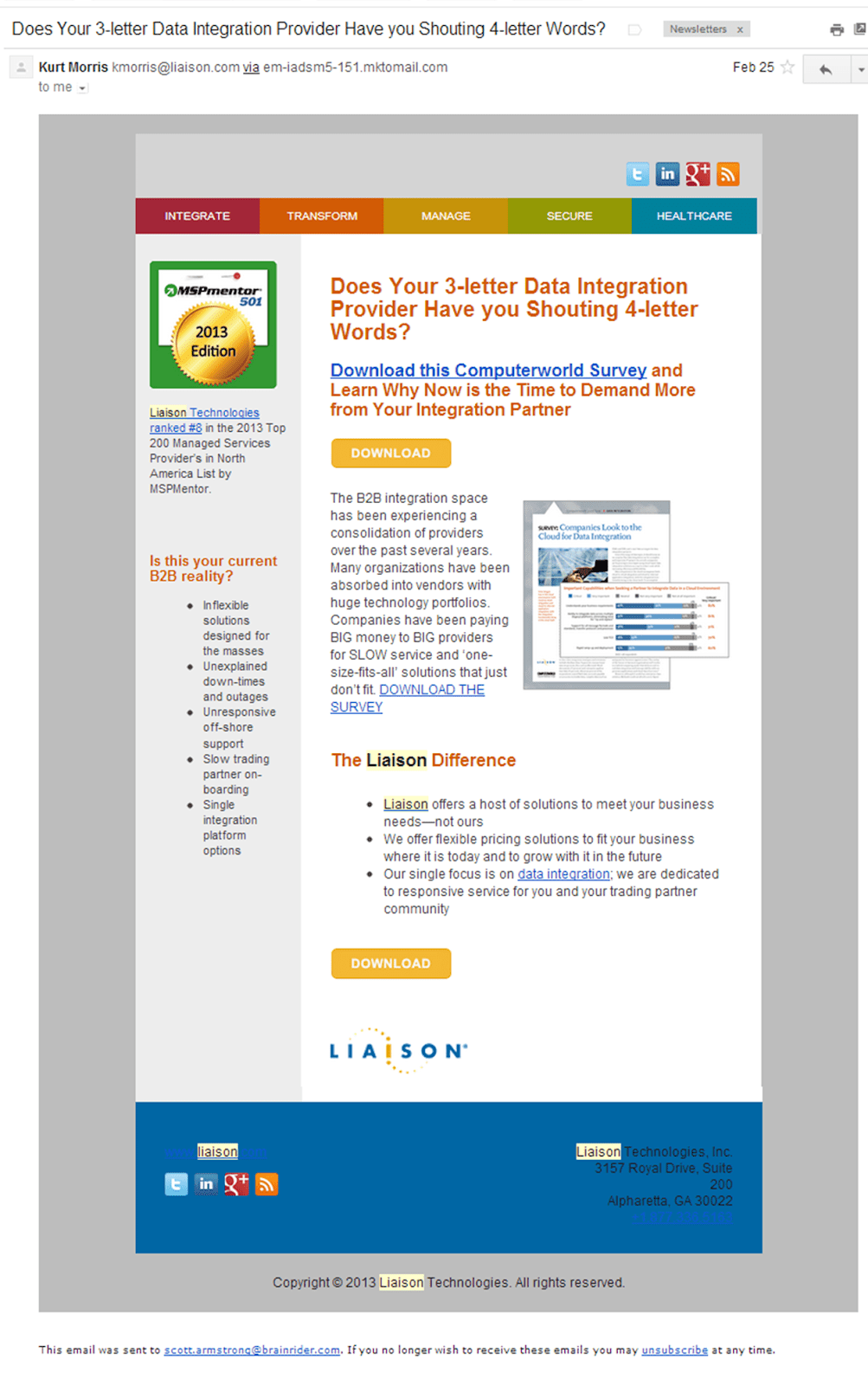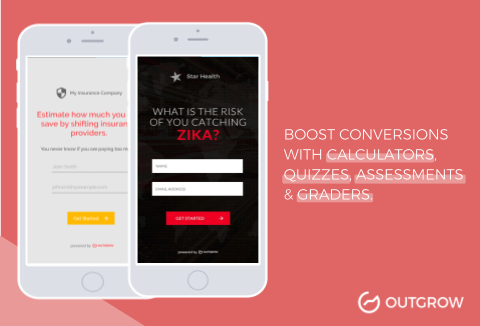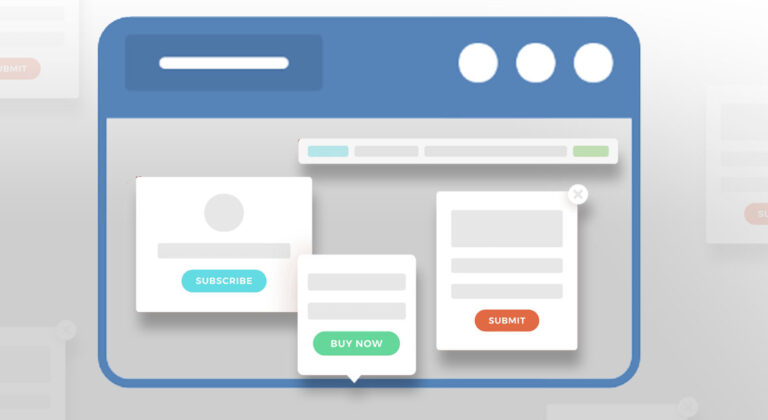A Map to Creating Your Own Interactive Lead Nurturing Strategy

I hope you enjoy this blog post. If you want Hello Bar to grow your leads, click here.
Author:
Ryan Bettencourt
Published
August 28, 2018

While lead generation still remains a key focus for marketers, 74% of companies state lead conversion as their top priority. What does this mean for you, as a marketer? You can’t stop at lead generation. A lead nurturing strategy is what’s going to get you the dollars. To survive in 2018, you need to make lead nurturing an integral part of your marketing strategy.
However, the good ‘ol lead nurturing strategies won’t work anymore. If you think setting up a simple drip campaign or running retargeting ads is all you need to do to nurture leads, think again. It’s time for Lead Nurturing 2.0.
Before we dive into the nitty gritty of lead nurturing, we want you to imagine a place far away with tons of leads coming in AND the majority of those leads turning into customers. Now, go there. Turns out that place is really not that far. Consider this blog as your guide to the promised land!

But First, Let’s Talk about Lead Generation
There have been a lot of myths about lead generation. For the purposes of this post, we’re talking about lead generation as the process of collecting leads through digital marketing. 53% of marketers say half or more of their budget is allocated to lead generation. While SEO optimization and content marketing may attract people to your site, on-site elements are mainly responsible for collecting leads. Full-page takeovers, popup modals, and sliders are just a few of the million ways you could do it. Tools like Hello Bar help you do just that!

A Look at the Path to Lead Nurturing
While lead generation remains extremely important to most marketers, including freelancer marketers, an increasing number of them are now also focusing their attention on lead nurturing i.e. the process by which a lead converts into a paying customer. Focusing all your resources on lead generation doesn’t cut it anymore. In fact, according to Invespcro, companies that stop at lead generation lose 80% of the leads, whereas companies that have a lead nurturing strategy spend 33% less while generating 50% more sales.
It is equally important to set the record straight about drip campaigns. Many marketers struggle to differentiate between lead nurturing and running drip campaigns. A drip marketing program sends communications (mostly through email) at a pre-decided pace and time as set by the marketer. It is a popular strategy for lead nurturing but it needs to be complemented with segmentation, amongst other things, to be able to make a real difference.
Lead Nurturing > Drip Campaigns
3 Obstacles to Conquer When It Comes to Lead Nurturing
This might come as a shock to you, but 79% of marketing leads never convert into sales. While most marketers claim to apply a well-planned lead nurturing strategy, they are not really killing it at the conversion game. Here are 3 obstacles that most marketers face when it comes to implementing a solid lead-nurturing strategy.
P.S. Accompanying them are some commandments that might help you!
1. Nurturing Too Long or Too Short
Commandment 1: Time is of the essence, kid.
How long should you continue nurturing leads before archiving them? Continued focus on leads long turned cold can repel your leads as well as take precious time away from nurturing the leads that are warmer. On the other hand, giving up on leads too soon may lead to lost sales. They might have just needed more time.
Luckily for us, there is a way out of this after all. You can determine the time frame for your lead nurturing strategy by taking into account your average customer buying cycle. How long does it take your leads to convert to sales? What are the factors mainly responsible for delaying it and how can they be timely optimized?
Just mold your contact with the prospects based on their stage in the sales funnel, and you will have that lead nurturing time frame sorted.

2. Using the Wrong Content
Commandment 2: Everyone has the right to make mistakes but repeatedly using wrong content is abusing the privilege.
According to a study by Invespcro, 59% of marketers believe creating relevant content is the biggest challenge faced while creating a lead nurturing program. Additionally, 68% of marketers identify lead scoring based on content as their primary revenue contribution driver. This is enough proof of the importance of content when it comes to lead nurturing.
You need to provide relevant content offers by examining your present content strategy. There is a general consensus among marketers on these content forms based on the stage of the prospect in the sales funnel:
Awareness Stage – In this stage, talk about the problems that your company tries to solve via educational blog posts, white papers, e-books, and quizzes. Let’s take the example of Kissmetrics’ content for the awareness stage. They publish blogs related to their product, like this one, explaining why traffic on the website should always be given priority over conversions.
The most striking thing about this blog is that it rarely talks about the company’s product. It provides valuable information to marketers in need of it. Guess where those marketers turn to when they need a boost to their website traffic?
Evaluation– Now that you’ve talked about the problem, show how your company solves the problem via checklists and kits, tip sheets, and/or educational webinars. Continuing with the example we gave before, Kissmetrics knows how to create content for the evaluation stage just right. They regularly attract leads with demos, and webinars explaining why and how to use the product. Occasionally, they create blogs and videos around their new tools and products.
Purchase – In this final stage, differentiate yourself from the competition and show why your company provides the best solution to the problem via testimonials, free consultations, industry case studies, data-driven calculators and recommendations and free trials. Social proof is no joke and Kissmetrics understands that. They are stacked with case studies and testimonials (and not just on their own website) to encourage leads to buy the product. What a wholesome content strategy!
Adjust your content offers based on these guidelines and fill out any gaps your content strategy might have. You can use an AI Writer to create personalized and targeted content that resonates with your prospects at every stage of the buyer’s journey.
3. Lack of Proper Analysis
Commandment 3: We could agree with you and say analysis isn’t important but then we’d both be wrong
You cannot optimize your lead nurturing strategy if you do not invest in the analysis of your past strategy. We have got three words of wisdom for you: Track, Measure, and Analyze.
Track your leads by clearly defining your lead’s life cycle stage. This ensures that your team communicates with the lead according to the stage he or she is at in the sales funnel. Additionally, use analytics tools (like Crazy Egg) and a CRM effectively so that you know from where and when your leads come. Don’t forget to tie your goals with your lead conversion tracking data to get a clear idea of your progress.
Measure how many leads come in, how many of them are forwarded to sales, and how many enter the lead nurturing program. Measure your conversions and the time taken for prospects to turn into customers. Since content is king, don’t forget to measure which lead magnets are the most effective and think of ways to optimize them.
Analyze your leads by using the lead score to assign values to each lead. This will help you streamline your efforts for sales. Why waste time on an uninterested lead anyway, right? Consider factors like lead demographics, email engagement, and online behavior as part of your lead analysis. Most importantly, try until you succeed. Test those strategies and test them again, until you find the one that works for you.
Why Interactive Lead Nurturing
Now that we know the 3 major problems that marketers face when making a lead nurturing strategy, let’s talk about how the new age of digital marketers is revolutionizing lead nurturing by adding a dash of interactivity to it.
According to research, white papers (83%), eBooks (73%), and on-demand webinars (63%) continue to be the most used content for lead nurture. In recent times, interactive content has been recognized by marketers as a game changer. Let’s mix things up, shall we?
Here are 3 reasons why an interactive lead nurturing strategy may be worth investing in:
1. Trustworthy & Value Driven
It’s time to phase out the sales pitch. Customers today are well-informed. They often will have already researched you and 5 of your top competitors before you even start your sales pitch.
Our advice: don’t bother. You shouldn’t jump into emails suggesting a quote or demo straight away. Offer something of value to the customer. This allows the customer to trust you as well. Don’t sell, just be nice.

2. Personalized Content
Interactive Content, by its very character, is more personalized than passive content. Which one do you think will give a more personalized response – “How does interactive content help you get more leads” or “Check out how many extra leads you’re likely to get with interactive content”?
Most consumers will agree that the latter will increase their purchase intent. Well, at least 78% of them do. Personalized content brings greater results as it provides to the customer’s current need. It increases the likelihood of engagement by meeting customer expectations.
In fact, according to research, 79% percent of companies that exceed their revenue goals have a documented personalization strategy.
We rest our case.
There are various ways you can send personalized emails to your leads. However, a key requirement to making your emails more personalized is to generate as much information about your leads as you can. Segment them into ever-more fine-tuned segments and then create hyper-targeted emails for those segments.
Interactive content helps you here as well. The responses that your prospect gives to the questions inside the interactive content can be used to generate a richer profile of the prospect and help you target him or her more effectively.
Look at the example we gave earlier of the quiz “Check out how many extra leads you’re likely to get with X”. If one of the questions in the quiz is “How many leads are you currently generating per month?”, then you automatically get new info about your prospects, i.e. you know about their current lead generation level.

Imagine how useful your marketing and sales teams will find this info for nurturing and following up with those leads. That’s the power of interactive content!
3. Attention-grabbing & Impactful
Gone are the days of static and stale content. 81% of marketers are strong believers that interactive content grabs readers’ attention. This is because interactive content gives real-time answers to your customers’ most pressing questions and provides personalized recommendations and suggestions. Hence, 70% more conversion than passive content becomes possible. Talk about impact!
Woah, we have come a long way. As a treat for getting this far, here are two different lead nurturing emails – the wrong kind and the right kind.
Hopefully. this will help you understand the difference between a lead nurturing strategy that will take your business off the ground versus one that will run the business into it.
Examples of Lead Nurturing Emails

The Wrong Kind of Interactive Nurturing Email – The Liaison CTA Email
While this email got a lot of things right, it is not necessarily the best example of an interactive lead-nurturing email.
The subject line is enough to intrigue the leads and may grab a high open rate. However, while single CTAs like the one here are effective for simple, price-based email campaigns, they do not bring much results in B2B campaigns with diverse audiences and decision stages.
The Right Kind Of Interactive Nurturing Email – Interactive Abandoned Cart Email
People are too busy to look back at the products they didn’t end up buying. So, how do you nudge them towards that checkout button?
It can be very beneficial to send them a quiz recommending the right product just for them. People like to feel unique and acknowledged for their individuality.

If your lead nurturing email falls in the second category, you’re on the right track. If not, here are 4 tips that will help you improve your lead nurturing game.
4 Steps to Implement an Interactive Lead Nurturing Strategy
1. Use Calculators & Quizzes Across the Marketing Funnel
We have already told you about the importance of interactive content. While interactive content serves as an excellent way to generate leads, we’ve seen that they also have great potential to nurture leads and move them down the funnel.
Interactive quizzes and calculators will provide you with valuable information from the answers inputted by them. You can later use this information to target those leads better and convert them into customers. And it’s important to choose a WordPress plugin for quizzes if you use WordPress as your website platform.
Examine the topics of content that are already working well for your company. Now, convert them into interactive pieces of content, and voila! Let the magic unfold. If you’re confused about what interactive content topics to start with, try this free tool to generate ideas.

2. Retargeting with a Dash of Interactivity
Your everyday retargeting ads may convert, but what if these ads could add value too? Outgrow quizzes and calculators don’t just provide you with leads but also provide valuable information about them. Most marketers use that collected information and create retargeted ads for those leads. And why wouldn’t they? Retargeted ads have a click rate of 44% compared to the 0.1% rate for display ads.
Here is an example of a retargeted ads created with the help of interactive content. This calculator recommends watches by collecting valuable information like the lead’s sex, budget, their reason for buying the watch. This information generates a result that can later be used in retargeted ads.
3. Give Rewards and Incentives
“Incentives are a thing of the past”, said nobody ever. Rewards and incentives are alive and booming. They encourage customers to engage more with the brand in a multitude of ways.
Interactive content lets you experiment with how you offer rewards to your customers. You can think beyond the usual sweepstakes-style contest, and instead build your rewards program around a graded quiz. For instance, you can ask your customers to take a quiz related to your brand or product/services and then attach incentives to the grade they score on the quiz.
Let’s assume that a company that manufactures cars creates a similar quiz. The questions could be about the founder’s name, the latest car model, and even about cars in general. Customers would be graded according to the no. of answers they get right. The more you score, the better your loyalty offers!
4. Make Sales Meet Marketing
There is a famous saying among marketers: “Marketers are from Mars, and sales are from Venus.” No, this has nothing to do with stereotypes but is just an ode to the constant conflict between marketing and sales.
Effective lead nurturing depends on how well sales and marketing are in sync. Use interactive content to gather valuable information about your prospects and forward it to your sales team.
For example, if someone takes a quiz to find the right sunglasses, the information from this quiz can be stored – it could be the lead’s face shape or favorite color. This information will help the sales team to cater to the quiz-taker’s specific needs and increase the closing rate.

One thing is clear, lead nurturing has become a necessity. As the market competition becomes more intense and buyers become more independent, mastering lead nurturing becomes all the more important. Hopefully, through this article, it has become easier for you to understand just how to do that.
So, what do you say? Is it as beautiful in the land of nurtured leads as we think it is?
About the Author: This post is written by Etee Dubey. She is a full-time content marketer at Outgrow and a part-time dreamer. In her free time, she catches up with her reading and explains the meaning of her eccentric name to people around her.







